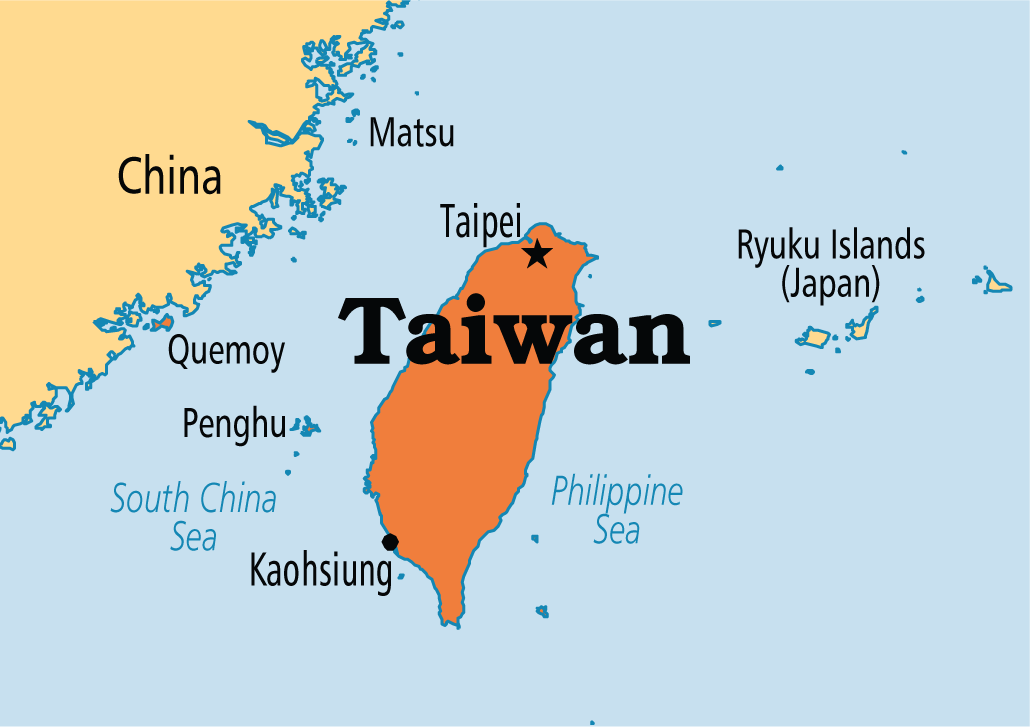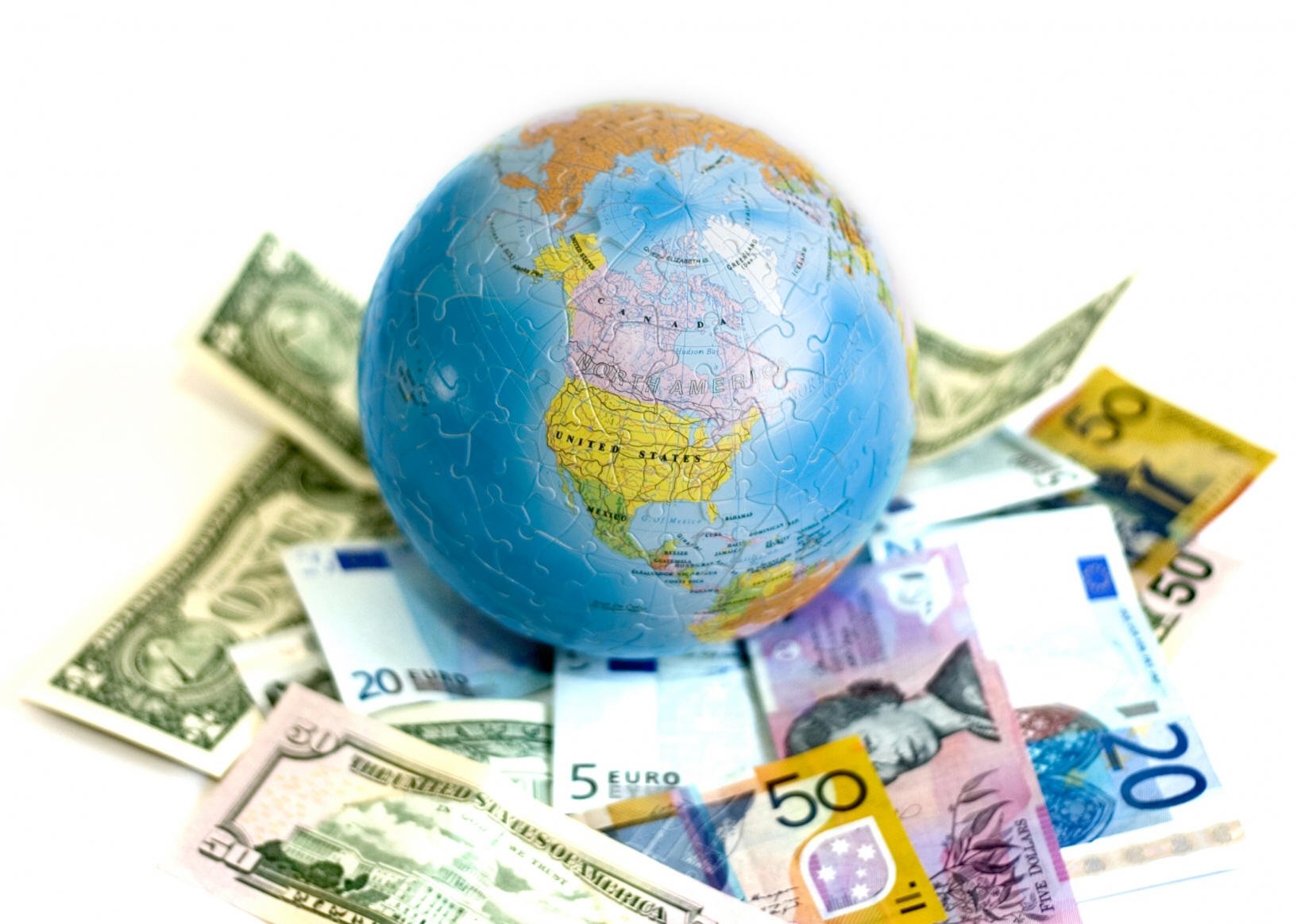How Taiwan Industrialized Post WWII And Proved The Capitalist Model More Successful Than China's Communist Model

One of my areas of study and interest is Asia, mostly because of the rapid industrialization and growth that many countries there have undergone. Taiwan is often forgotten by many westerners, primarily because of its massive neighbor and brother China, but Taiwan is the number 29th country on the GDP per capita list, outranking many western countries such as Canada, France and the UK. Most importantly Taiwan has a higher GDP per capita than China which was and in some ways today still is a stark rival. Comparing China's and Taiwan's different rise to industrialized powers shows how a more capitalistic system vs a communist one was able to, in an extremely short period of time, able to increase the living standards of its people multiple folds. This is how Taiwan industrialized after WWII and why they became the economic power they are today.
Post World War II Recovery
In 1949 after a successful communist movement in mainland China by Mao Ze Dong, Kuomintang leader, former mainland Chinese general and politician Chiang Kai-shek and around one million of his followers fleeing mainland China after being forced out by communist revolutionaries. Taiwan was very unique from the other three little dragons, in the fact that the country itself was never meant to become a permanent residence for Kai-shek and his followers, but rather only a base of operations for plans to retake the mainland. With the goal of retaking the mainland firmly in mind, Kai-shek and other members of the Kuomintang arrived on an island of people who, after 50 years of Japanese colonial rule and a short period of brutal Chinese governorship, had little admiration for outsiders and mainland Chinese. However after a long period of abuse, the native Taiwanese people had become complacent, which allowed the Kuomintang and Chiang Kai-shek to take power in the capital of Taipei quite easily.
Upon arrival, after quickly analyzing the almost non-existent Taiwanese economy the Kuomintang leaders decided to take action to increase prosperity and self sufficiency within the country. Although semi modernized during its time as a colonial power for Japan, a war torn Taiwan, was unable to produce enough for a self-sufficient economy and with little trade from neighboring countries, found it hard to survive. Taiwan, which had primarily exported agricultural products to Japan, soon found a lack of demand for their products after US aid to Japan and a lack of Japanese trading power. In an attempt to move the country towards self sufficiency, the Kuomintang went after a so called “Import Substitution Policy”, which would industrialize Taiwan’s manufacturing industry and boost their agricultural industry so the country no longer needed to rely on trade to survive. After cheap manufactured goods exported from Japan started to threaten Taiwanese industries, specifically textiles, the Kuomintang instituted import restrictions which incentivized local industries to grow and find substitutes which only added to self sufficiency.
By 1951, with a stable government, the success of the import substitution policy and new amounts of foreign aid from the US, Taiwan was looking like a different national than it had been only three years earlier. It was at this point that the Kuomintang set out not to make the same mistakes that they had made in mainland China earlier and made a further push for agricultural development to sustain a lifestyle for the common Taiwanese person. With large amounts of land purchasing from large land owners and redistribution to the lower classes, Taiwan was able to create a booming agricultural industry that was soon able to start creating a surplus and once more start exporting excess goods. The Kuomintang with the help of American aid, were able to greatly increase the post war quality of life for the Taiwanese people after the war and able to rejuvenate the economy through self sufficient planning and incentivization.
Political Stability
When the Kuomintang, under Chiang Kai-shek originally took power over Taiwan, there was little intention to stay long term so instead of catering to the political desires of the native Taiwanese, a more authoritarian approach was taken to government rule. A well organized army and secret police were used in the early days to control the population. Because when the Kuomintang made the move to Taiwan only the closest of Kai-shek’s political associates followed him, he was able to have almost complete control over the party. Many of the officials he butted heads with in the past stayed on the mainland instead of making the move to Taiwan which added to a great amount of party unification under the new Kuomintang.

To Kai-shek, Taiwan served as a second chance of sorts when it came to ruling, as many of the problems that plagued him during his rule of mainland China were able to be directly dealt with from the beginning in Taiwan. The main problem that was addressed early on in the new Kuomintang leadership was corruption and stability it leadership. Political officials were barred from taking place in any private enterprise which aimed to keep the private sector free to grow out of the reach from government officials. The added stability in the government lowered massive inflation that had plagued both China and Taiwan in earlier years and paved way for large sums of private investment into the Taiwanese economy. Without the stability of the Kuomintang in Taiwan, the economy would not have prospered as well as it did.
The Move Towards A More International Taiwanese Economy
In 1959 America, in need of modern allies in the east, made it clear that if Taiwan were to focus on domestic development and commit its resources to industrialization and forget about retaking mainland China, substantial aid would be provided. Although the idea of retaking mainland China was not completely abandoned in the minds of many of the Taiwanese, the Kuomintang leadership agreed to the proposal. In early 1960, the Kuomintang laid out a nineteen point plan for economic and financial reform within Taiwan that heavily incentivized growth of private companies looking to export products.
The key to growing the economy was not in America’s financial aid, but in the aid offered from training many of Taiwan’s future officials at top tier universities in the United States. Chiang Kai-shek was brilliant in the fact that he realized he was out of his league with the economic plans for Taiwan, and enlisted a large amount of foreign trained and specialized technocrats to move Taiwan in the right direction. The strong connections that Taiwan made with the United States, the World Bank and the International Monetary Fund proved substation for providing loans for growth and development during this time.

The newly appointed specialists looked to Japan as an economic model for growth and realized that with relatively few natural resources on the Island, specialization into manufacturing and exporting was the key to growth in Taiwan. Up until that point many of the key manufacturers in Taiwan were state run and simply not as efficient as potential privatized companies. The first challenge was getting the Kuomintang to relinquish government control of these companies and slowly let the country become more privatized. Privatized companies would ensure the best and most talented leaders would run the companies and growth would be sustained. Overall this move proved extremely successful as the amount of exports private companies were doing, as a percentage of exports and as a total amount of exports in general, increased substantially. Although the government kept a few key industries, the majority of manufacturing was now in the hands of the private sector.
With the success of Taiwan’s new economic overhaul, mainland entrepreneurs and outside investors started to flock into the country. Unsatisfied with how the Chinese Communist Party ran business in mainland China, Taiwan was seen as a place where entrepreneurs could go to create private businesses mostly free from government intervention. The number of small businesses in Taiwan during the 60s and 70s increased substantially with a growth of almost three times the number of employees. Large businesses continued to grow as well as the demand for Taiwan made goods skyrocketed globally. In some cases companies would even have to link up with other manufacturers to fulfill foreign demand, which ultimately created useful business connections for the future. Ultimately foreign demand for cheap manufacturing parts and products from countries all around the world, especially America, lead Taiwan into a golden era of prosperity, with a GDP per capita growth of $100 to $7500 in only around four decades. This was a feat that at the time was matched by very few countries in the world and like Japan, Taiwan became an economic model for how to develop a third world country.

The massive success of Taiwan as an economic power in the 20th century was in large part due to the realization of the mistakes that the Kuomintang made in mainland China and the willingness to change them. A stable Taiwanese government and currency also provided faith in the country to outsiders and made foreign investment possible. However, perhaps the most important quality of Taiwan and Kuomintang was the ability to realize that they needed outside expertise which ultimately provided invaluable connections and provided long term growth for the country. In the end it is pretty ironic because although the Kuomintang were originally set to take back the mainland it seems like in the long run they provided more economic well being for East Asia by staying in Taiwan.
